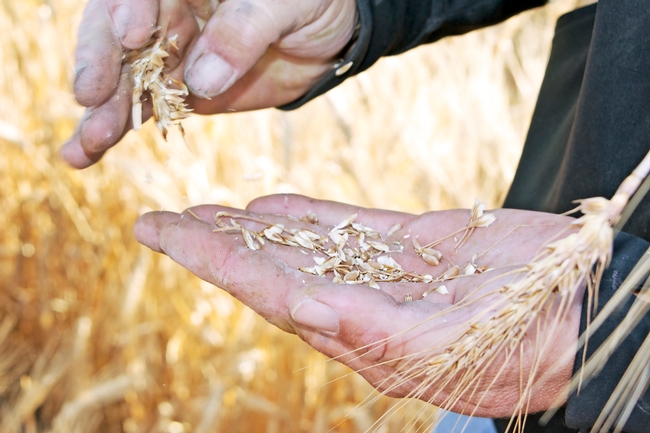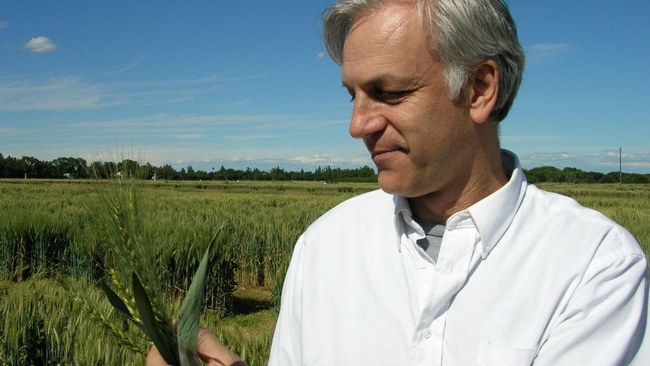Posts Tagged: Jorge Dubcovsky
UC Davis team identifies wheat gene that increases yield
The findings could help growers produce more wheat without expanding operation
A team of scientists from University of California, Davis, have identified a new gene variant in wheat that can increase the amount of the grain produced, new research published in the journal PLOS Genetics finds.
Wheat is a staple of food diets worldwide and the gene discovery could allow farmers to grow more food without increasing land use. Increased yield could also lower consumer prices, making the crop more accessible.
“We have a growing human population that likes to eat every day,” said Jorge Dubcovsky, a plant sciences distinguished professor who led the research. “We need to produce more wheat in the same space so we need plants that are more productive.”
The researchers found a gene – WAPO1 – that controls the maximum number of grains in a wheat spike. Breeding the beneficial gene variant into the plants could delay the formation of the terminal spikelet, providing room for more grains to grow in each spike rather than ending production of grain.
WAPO1 is one of the first genes discovered that can affect wheat yield. “We are trying to make more productive wheat varieties and we are starting to understand how that trait is controlled,” Dubcovsky said.
Pasta wheat lacking the gene
The gene variant for high grain number is found frequently in bread wheats but not in pasta wheats. By breeding the beneficial gene variant into those pasta wheat varieties, growers could increase yield by 4% to 5% in cultivars that have the biomass capacity to fill the extra grains.
“We developed molecular markers to select for the form of that gene to produce increased yield,” Dubcovsky said. “It's a significant step forward.”
Previous research by the team mapped the gene and identified others that could affect yield. This research confirmed those findings for WAPO1.
Discovery on path to future yield increases
The WAPO1 gene is part of a network of genes that work together to control yield, and researchers need to identify the best variant combinations to maximize yield. Solving this puzzle can lead to better production rates.
“We will continue to try to understand the network of genes that control the yield of wheat,” he said.
Saarah Kuzay, Huiqiong Lin, Chengxia Li, Shisheng Chen, Daniel P. Woods and Junli Zhang from UC Davis also contributed to the research, as did scientists from Howard Hughes Medical Institute, Heinrich Heine University and Peking University Institute of Advanced Agricultural Sciences.
Funding was provided by USDAs National Institute of Food and Agriculture's Food Research Initiative, the International Wheat Yield Partnership and Howard Hughes Medical Institute.
Ensalada de pasta: más nutritiva que nunca
Preparado por Diane Nelson
Adaptado al español por Myriam Grajales-Hall
La popular ensalada de macarrones o pasta es un platillo sustancial y económico; pero, ¿es nutritivo?
Sin lugar a dudas, e investigaciones realizadas por Jorge Dubcovsky, profesor en el Departamento de Ciencias Vegetales en UC Davis, así lo comprueban. El equipo de Dubcovsky descubrió un gene en trigo domesticado que había sido dañado y que controla la distribución de nutrientes a los granos de plantas saludables. Además, descubrieron una copia del gene dañado en trigo salvaje o silvestre, permitiéndoles (a ellos y a otros) producir nuevas variedades con niveles mucho más altos de proteína, hierro y cinc.
El trigo provee alrededor del 20 por ciento de todas las calorías que se consumen en todo el mundo. Es decir que comemos muchísimo trigo, y después del arroz, es la principal fuente de calorías para los seres humanos. En algún momento durante el proceso de domesticación (hace unos 10,000 años), el trigo sufrió un cambio que redujo el contenido de proteína, cinc y hierro en el grano.
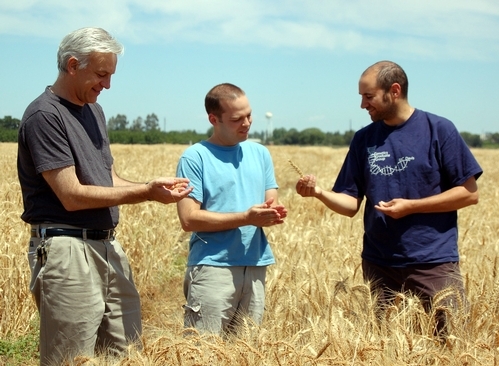
En el 2006, después de años de mapeo, Dubcovsky y su grupo descubrieron la causa de este cambio: una mutación en un gene llamado NAM-B1. En plantas sanas de grano, el NAM-B1 controla la movilización y distribución de nutrientes a los granos cuando las hojas se secan. Sin una copia activa del gene, el trigo cultivado no procesa bien los nutrientes y, por lo tanto, grandes cantidades de proteína, hierro y cinc permanecen en su tallo.
El equipo de Dubcovsky examinó luego los antepasados del trigo comercial y hallaron, para su sorpresa, dentro del genoma de espelta o trigo salvaje un gene totalmente funcional de NAM-B1. El trigo salvaje se puede cruzar libremente con el trigo doméstico empleando métodos convencionales, así que no fueron necesarios métodos controversiales de ingeniería genética para restaurar el gene pérdido.
La Universidad de California ya ha dado a conocer una variedad – Lassik – con el valor nutritivo fortalecido. Esta variedad está mucho mejor genéticamente en cuanto a gluten más fuerte y resistencia tanto a la roya lineal como a la roya foliar. Y dado que las nuevas variedades fueron producidas de variedades comerciales muy usadas, la nueva variedad retiene sus características que facilitan su uso por agricultores, tales como un alto rendimiento y un excelente sabor, que los consumidores pueden disfrutar.
Las nuevas plantas son de dominio público y se distribuyen a cultivadores en todo el mundo. Alrededor de 2 millones de habitantes en el planeta no cuentan con los micronutrientes necesarios, así que un trigo más nutritivo podría marcar una gran diferencia en la lucha contra el hambre.

Así que cuando sus amistades le pregunten, "¿Cuál es el secreto de su fantástica ensalada de pasta?" usted ya sabe cómo responder:
"Proteína, hierro y cinc."
Para más información acerca de lo que el Departamento de Ciencias Vegetales de UC Davis está haciendo para que nuestras ensaladas sean más sabrosas, nutritivas, seguras y asequibles, consulte el Folleto de la primavera 2010 (Spring 2010 Leaflet).
Pasta salad - more nutritious than ever
The ever popular pasta salad is sturdy and economical, but is it nutritious?
It sure can be, and research from UC Davis Department of Plant Sciences professor Jorge Dubcovsky is helping to make that so. Dubcovsky’s team discovered a gene in domesticated wheat that had been damaged, a gene that controls the distribution of nutrients to the grains in healthy grain plants. What’s more, they discovered a copy of that damaged gene in wild wheat, enabling them (and others) to breed new varieties with substantially increased levels of protein, iron and zinc.
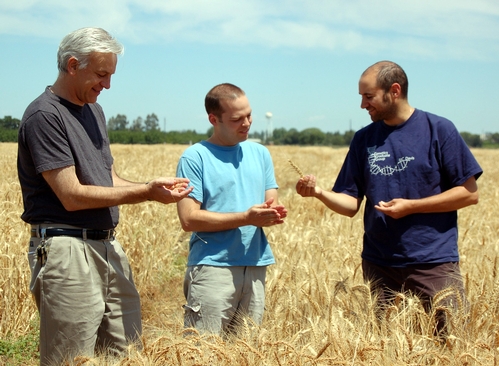
Wheat provides about 20 percent of all the calories people consume worldwide. In other words, we eat a lot of it – it’s second only to rice as a human source of calories. Sometime during its domestication (some 10,000 years ago) wheat underwent a change that lowered the protein, zinc and iron content in its grain.
In 2006, after years of mapping, Dubcovsky and his team discovered the culprit - a mutation in a gene called NAM-B1. In healthy grain plants, NAM-B1 controls the remobilizing and distribution of nutrients to the grains when the leaves die off. Without a working copy of the gene, cultivated wheat is not a good processor of its nutrients, so large amounts of protein, iron and zinc are left in its straw.
Dubcovsky’s team then examined the ancestors of commercial wheat and found, amazingly enough, a fully functional NAM-B1 gene within the genome of wild emmer wheat. Emmer wheat can be freely crossed with domestic wheat using conventional means, so no controversial genetic engineering methods were needed to restore the lost gene.
The University of California has already released one variety – Lassik - with the increased nutritional punch. Lassik also is genetically improved for stronger gluten and resistance to both stripe-rust and leaf-rust disease. And because the new strains were bred from widely used commercial varieties, the new variety retains its farmer-friendly characteristics such as high yield and consumer-friendly trait like excellent taste.
The new plants are in the public domain, distributed to breeders across the globe. Some 2 billion people around the world lack adequate micronutrients, so more nutritious wheat could make a big difference in fighting world hunger.
So when friends ask, “What’s the secret to your fantastic pasta salad?” you know what to say:
“Protein, iron and zinc.”
For more on what the UC Davis Department of Plant Sciences is doing to make our salads more tasty, nutritious, safe and affordable, see The Spring 2010 Leaflet
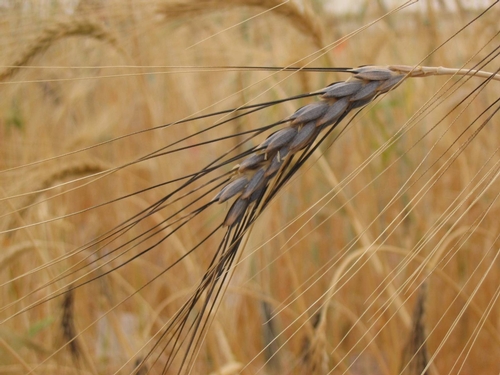
Wild wheat, Triticum turgidum ssp. dicoccoides
